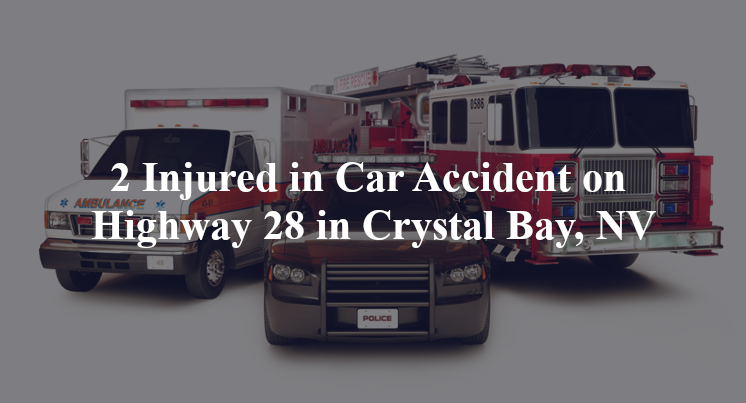2 Injured in Car Accident on Highway 28 in Crystal Bay, NV
Crystal Bay, NV — April 20, 2025, Two people were killed following a car accident that occurred at around 6:05 A.M. on Highway 28.

An investigation is underway into a car accident that left two people injured during the morning hours of April 20th. According to official reports, a head-on collision took place on Highway 28 near Gonowabie Road, though details of how the crash occurred remain unknown.
When first responders arrived on the scene, they found that two people had sustained serious injuries and transported them to the hospital. At this time there has been no further information released about the accident, including how it happened, or the identity and status of the motorists, however this remains an ongoing investigation and more details may be released by authorities in the future.
Commentary
When reports emerge of a head-on collision that sends two people to the hospital with serious injuries, like the one that occurred on Highway 28 near Gonowabie Road, the first priority is always care for those involved. But just behind that is the pressing need to understand exactly how such a collision could occur. Head-on crashes are often among the most serious, and they almost always raise questions that demand careful, detailed answers. To reach those answers, any meaningful investigation must begin by asking three key questions.
First, did the authorities thoroughly investigate the crash? Head-on collisions often happen quickly, without warning, and in areas where traffic patterns can change due to curves, elevation shifts, or temporary obstacles. Determining which vehicle crossed the center line—or whether a third factor caused one of them to do so—requires careful accident reconstruction. This involves more than simply clearing the wreckage and reopening the road. Investigators need to measure tire marks, analyze impact angles, and evaluate the condition of the roadway. Without these steps, early impressions of the crash may be inaccurate or incomplete.
Second, has anyone looked into the possibility that a vehicle defect played a role in the crash? Head-on collisions are sometimes triggered not by human error, but by mechanical failure. For instance, a steering or braking issue could cause a driver to lose control, especially on a narrow or winding highway. Tire blowouts, sudden suspension failures, or electronic stability control malfunctions can all contribute to a vehicle drifting out of its lane. These are not just theoretical possibilities—they are real-world risks that must be ruled out through forensic inspection of the involved vehicles. That can only happen if the vehicles are preserved and reviewed by experts with the right tools and knowledge.
Lastly, has all the electronic data relating to the crash been collected? Modern vehicles are equipped with electronic control modules (ECMs) that store vital pre-crash information, such as speed, brake use, throttle position, and steering angle. In a head-on collision, this data can help verify each driver’s actions in the moments leading up to impact. Without it, investigators are left to piece together events from physical damage and testimony alone. Additionally, nearby surveillance footage, dash cams, or even cell phone location data might offer important supporting evidence—if steps are taken quickly enough to preserve it.
A head-on crash is rarely without explanation—it’s just that the explanation isn’t always immediately visible. That’s why these three questions matter so much. They ensure that nothing is left to assumption and that every factor—from human error to vehicle performance—is given the attention it deserves. Only by asking and answering them can we begin to understand the full picture and move closer to accountability and prevention.

*We appreciate your feedback and welcome anyone to comment on our blog entries, however all visitor blog comments must be approved by the site moderator prior to showing live on the site. By submitting a blog comment you acknowledge that your post may appear live on the site for any visitors to see, pending moderator approval. The operators of this site are not responsible for the accuracy or content of the comments made by site visitors. By submitting a comment, blog post, or email to this site you acknowledge that you may receive a response with regard to your questions or concerns. If you contact Grossman Law Offices using this online form, your message will not create an attorney-client relationship and will not necessarily be treated as privileged or confidential! You should not send sensitive or confidential information via the Internet. Since the Internet is not necessarily a secure environment, it is not possible to ensure that your message sent via the Internet might be kept secure and confidential. When you fill out a contact or comment form, send us an email directly, initiate a chat session or call us, you acknowledge we may use your contact information to communicate with you in the future for marketing purposes, but such marketing will always be done in an ethical way.